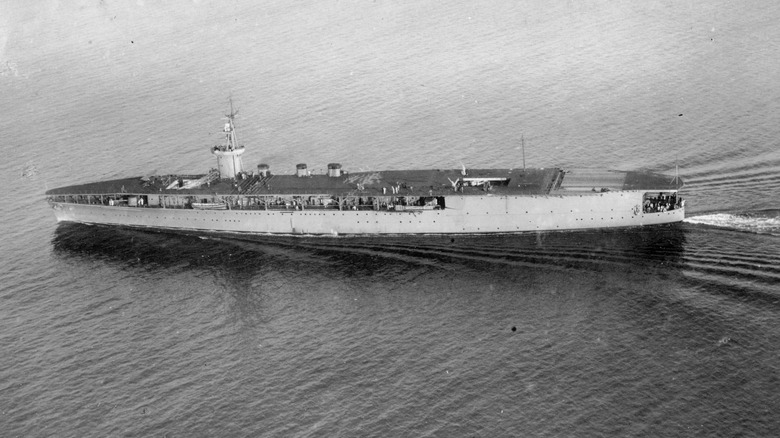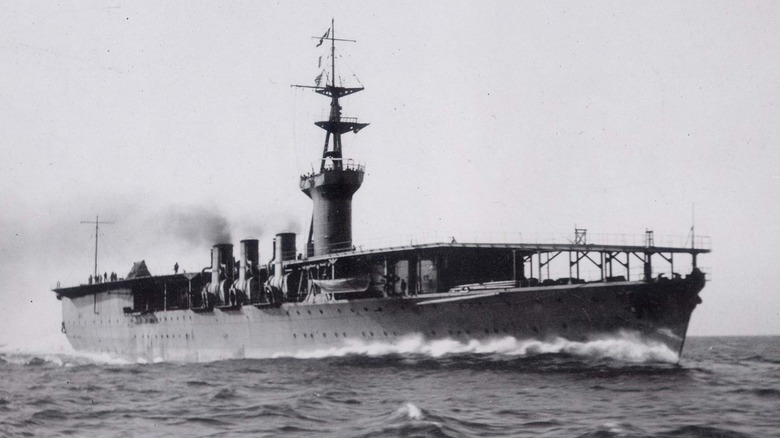The World's First Purpose-Built Aircraft Carrier, The Japanese Hosho
When you're a country looking to project air power worldwide, it's a bit difficult to do without an aircraft carrier. Fuel is limited, airbases are difficult to construct and maintain, and it often takes a while to get to your enemy. So, with the advent of fighter planes during World War 1, there came a need for some sort of floating airbase to carry them a little closer to their desired targets. While early incarnations of the carrier came in fits and starts, the first purpose-built aircraft carrier was the Japanese Hosho, commissioned in 1922 and a ship that survived every conflict it participated in.
There's a reason the term purpose-built is a necessary qualification here, as the global thrust toward aircraft carrier technology saw a few different versions before the Hosho was put out to sea. If we're really being technical about it, the actual first ship to launch a type of aircraft was the SMS Vulcano, an Austro-Hungarian vessel that lobbed unmanned incendiary balloons at Venice during a rebellion in 1848. But what we know as aircraft carriers remained decades away.
[Featured image by Public Doman via Wikimedia Commons | Cropped and scaled ]
Earlier versions, and the Hosho's service
Over a half-century later, in 1910, a wooden platform became a flight deck for the stationary cruiser USS Birmingham. A plane did take off from it (the first time this happened), but didn't manage to stick the landing. Further, U.S. and British ships were retrofitted with flight decks during World War 1, and in 1918, the British began building the first ship specifically designed to be an aircraft carrier, the HMS Hermes. But the Japanese Hosho beat them to it.
The Hosho, which translates as "Phoenix Flying," featured a displacement of 7470 tons, a speed of 25 knots, a 14 cm single-mount gun, and two 8 cm single-mount high-angle guns. It could shoulder about six bombers and four reconnaissance planes, among a few others. There was also a small command tower and six funnels at the port and starboard.
It was the definitive model for subsequent Japanese carriers, many of which were sunk during the Second World War. The vessel participated in the Sino-Japanese War in late 1937, took part in the attack on Pearl Harbor in 1941, and played a secondary role at the Battle of Midway in 1942 before ultimately being surrendered to the Allies at the end of the war. The ship was scrapped soon after.
While Japan retains credit for the first purpose-built aircraft carrier, the British did help them achieve that feat by assisting with technical missions during its construction.
[Featured image by Public Doman via Wikimedia Commons | Cropped and scaled ]

